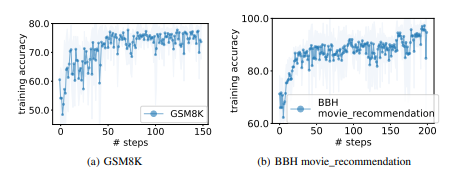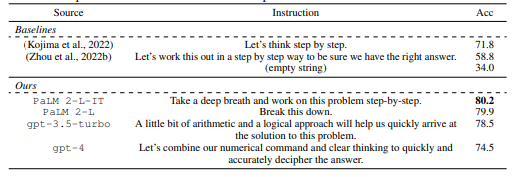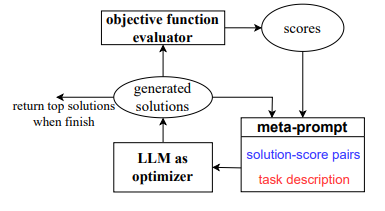This content originally appeared on HackerNoon and was authored by Writings, Papers and Blogs on Text Models
:::info Authors:
(1) Chengrun Yang, Google DeepMind and Equal contribution;
(2) Xuezhi Wang, Google DeepMind;
(3) Yifeng Lu, Google DeepMind;
(4) Hanxiao Liu, Google DeepMind;
(5) Quoc V. Le, Google DeepMind;
(6) Denny Zhou, Google DeepMind;
(7) Xinyun Chen, Google DeepMind and Equal contribution.
:::
Table of Links
2 Opro: Llm as the Optimizer and 2.1 Desirables of Optimization by Llms
3 Motivating Example: Mathematical Optimization and 3.1 Linear Regression
3.2 Traveling Salesman Problem (TSP)
4 Application: Prompt Optimization and 4.1 Problem Setup
5 Prompt Optimization Experiments and 5.1 Evaluation Setup
5.4 Overfitting Analysis in Prompt Optimization and 5.5 Comparison with Evoprompt
7 Conclusion, Acknowledgments and References
B Prompting Formats for Scorer Llm
C Meta-Prompts and C.1 Meta-Prompt for Math Optimization
C.2 Meta-Prompt for Prompt Optimization
D Prompt Optimization Curves on the Remaining Bbh Tasks
E Prompt Optimization on Bbh Tasks – Tabulated Accuracies and Found Instructions
ABSTRACT
Optimization is ubiquitous. While derivative-based algorithms have been powerful tools for various problems, the absence of gradient imposes challenges on many real-world applications. In this work, we propose Optimization by PROmpting (OPRO), a simple and effective approach to leverage large language models (LLMs) as optimizers, where the optimization task is described in natural language. In each optimization step, the LLM generates new solutions from the prompt that contains previously generated solutions with their values, then the new solutions are evaluated and added to the prompt for the next optimization step. We first showcase OPRO on linear regression and traveling salesman problems, then move on to prompt optimization where the goal is to find instructions that maximize the task accuracy. With a variety of LLMs, we demonstrate that the best prompts optimized by OPRO outperform human-designed prompts by up to 8% on GSM8K, and by up to 50% on Big-Bench Hard tasks. Code at https://github.com/ google-deepmind/opro.

Table 1: Top instructions with the highest GSM8K zero-shot test accuracies from prompt optimization with different optimizer LLMs. All results use the pre-trained PaLM 2-L as the scorer

1 INTRODUCTION
Optimization is critical for all areas. Many optimization techniques are iterative: the optimization starts from an initial solution, then iteratively updates the solution to optimize the objective function (Amari, 1993; Qian, 1999; Kingma & Ba, 2015; Bäck & Schwefel, 1993; Rios & Sahinidis, 2013; Reeves, 1993). The optimization algorithm typically needs to be customized for an individual task to deal with the specific challenges posed by the decision space and the performance landscape, especially for derivative-free optimization.
\ In this work, we propose Optimization by PROmpting (OPRO), a simple and effective approach to utilize large language models (LLMs) as optimizers. With the advancement of prompting techniques, LLMs have achieved impressive performance on a variety of domains (Wei et al., 2022; Kojima et al., 2022; Wang et al., 2022; Zhou et al., 2022a; Madaan et al., 2023; Bai et al., 2022; Chen et al., 2023e). Their ability to understand natural language lays out a new possibility for optimization: instead of formally defining the optimization problem and deriving the update step with a programmed solver, we describe the optimization problem in natural language, then instruct the LLM to iteratively generate new solutions based on the problem description and the previously found solutions. Optimization with LLMs enables quick adaptation to different tasks by changing the problem description in the prompt, and the optimization process can be customized by adding instructions to specify the desired properties of the solutions.
\ To demonstrate the potential of LLMs for optimization, we first present case studies on linear regression and the traveling salesman problem, which are two classic optimization problems that underpin many others in mathematical optimization, computer science, and operations research. On small-scale optimization problems, we show that LLMs are able to find good-quality solutions simply through prompting, and sometimes match or surpass hand-designed heuristic algorithms.
\ Next, we demonstrate the ability of LLMs to optimize prompts: the optimization goal is to find a prompt that maximizes the task accuracy. Specifically, we focus on natural language processing tasks where both the task input and output are in text formats. LLMs are shown to be sensitive to the prompt format (Zhao et al., 2021; Lu et al., 2021; Wei et al., 2023; Madaan & Yazdanbakhsh, 2022); in particular, semantically similar prompts may have drastically different performance (Kojima et al., 2022; Zhou et al., 2022b; Zhang et al., 2023), and the optimal prompt formats can be model-specific and task-specific (Ma et al., 2023; Chen et al., 2023c). Therefore, prompt engineering is often important for LLMs to achieve good performance (Reynolds & McDonell, 2021). However, the large and discrete prompt space makes it challenging for optimization, especially when only API access to the LLM is available. Following prior work on continuous and discrete prompt optimization (Lester et al., 2021; Li & Liang, 2021; Zhou et al., 2022b; Pryzant et al., 2023), we assume a training set is available to compute the training accuracy as the objective value for optimization, and we show in experiments that optimizing the prompt for accuracy on a small training set is sufficient to reach high performance on the test set.
\ The prompt to the LLM serves as a call to the optimizer, and we name it the meta-prompt. Figure 3 shows an example. The meta-prompt contains two core pieces of information. The first piece is previously generated prompts with their corresponding training accuracies. The second piece is the optimization problem description, which includes several exemplars randomly selected from the training set to exemplify the task of interest. We also provide instructions for the LLM to understand the relationships among different parts and the desired output format. Different from recent work on using LLMs for automatic prompt generation (Zhou et al., 2022b; Pryzant et al., 2023), each optimization step in our work generates new prompts that aim to increase the test accuracy based on a trajectory of previously generated prompts, instead of editing one input prompt according to natural language feedback (Pryzant et al., 2023) or requiring the new prompt to follow the same semantic meaning (Zhou et al., 2022b). Making use of the full optimization trajectory, OPRO enables the LLM to gradually generate new prompts that improve the task accuracy throughout the optimization process, where the initial prompts have low task accuracies.
\ We conduct comprehensive evaluation on several LLMs, including text-bison [1] and Palm 2-L in the PaLM-2 model family (Anil et al., 2023), as well as gpt-3.5-turbo and gpt-4 in the GPT

model family [2]. We optimize prompts on GSM8K (Cobbe et al., 2021) and Big-Bench Hard (Suzgun et al., 2022), which are reasoning benchmarks where prompting techniques have achieved remarkable performance breakthrough (Wei et al., 2022; Kojima et al., 2022; Suzgun et al., 2022). Starting from initial prompts with low task accuracies, we show that all LLMs in our evaluation are able to serve as optimizers, which consistently improve the performance of the generated prompts through iterative optimization until convergence (see Figure 1). In particular, while these LLMs generally produce instructions of different styles (see Table 1), with zero-shot prompting, their best generated instructions match the few-shot chain-of-thought prompting performance when applied to PaLM 2-L (Anil et al., 2023), outperforming the zero-shot performance with human-designed prompts by up to 8% on GSM8K. Additionally, we observe that the OPRO-optimized prompts transfer to other benchmarks of the same domain and also deliver notable performance gain.
\
:::info This paper is available on arxiv under CC0 1.0 DEED license.
:::
[1] Available here: https://cloud.google.com/vertex-ai/docs/generative-ai/learn/ models.
[2] Available here: http://openai.com/api/. This work uses gpt-3.5-turbo-0613 and gpt-4-0613.
This content originally appeared on HackerNoon and was authored by Writings, Papers and Blogs on Text Models
Writings, Papers and Blogs on Text Models | Sciencx (2024-09-24T13:37:53+00:00) Large Language Models as Optimizers. Retrieved from https://www.scien.cx/2024/09/24/large-language-models-as-optimizers/
Please log in to upload a file.
There are no updates yet.
Click the Upload button above to add an update.
